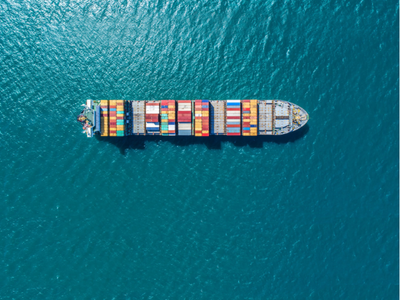Alternative fuels and shore power in focus as FuelEU Maritime enters into force

The regulation’s emissions-reduction targets will ultimately rely on the widespread adoption of alternative fuels - but shore power has a critical role to play in the meantime.
The European Union’s FuelEU Maritime, which entered into force on 1 January 2025, sets targets to drastically reduce the greenhouse gas (GHG) intensity of the European shipping sector. Applying to vessels over 5,000 gross tonnage, the regulation specifies a two-per cent reduction factor in 2025 against a 2020 baseline, increasing in five-year intervals to reach 80% in 2050.
Alternative-fuelled ships in demand
While measures such as voyage optimisation and the use of energy-saving devices will help ship owners to meet FuelEU Maritime’s short-term emissions-reduction targets, achieving its medium- and long-term goals will require the adoption of clean energy sources. Against this background, the number of alternative-fuelled ships on order grew by more than 50% in 2024, with the existing alternative-fuelled fleet increasing by almost 20% in the same period.
Regulatory framework on clean fuels taking shape
Meanwhile, the regulatory framework surrounding the safe implementation of alternative fuels continues to take shape. The International Maritime Organization (IMO)’s 109th Maritime Safety Committee (MSC 109), which took place from 2 to 6 December 2024, saw the adoption of amendments to the IGC Code to enable the use of ammonia cargo and the approval of draft interim guidelines for ammonia as fuel. Plans were also laid out for a gap analysis regarding fourth-generation nuclear power.Elsewhere, BIMCO recently adopted its FuelEU Maritime Clause for Time Charter Parties 2024 "to help stakeholders align their contractual frameworks”.
Shore power on the agenda
Crucial to FuelEU Maritime’s short-to-medium-term goals is shore power. From 2030, passenger and container ships greater than 5,000GT berthed at Trans-European Transit Network ports in the EU for more than two hours and not using zero-emissions technology are required to connect to an onshore power supply (OPS). From 2035, the rule will apply to all EU ports with available shore connections.FuelEU Maritime’s consideration of shore power promises to significantly reduce GHG emissions in and around portside areas while contributing towards its wider targets. Encouragingly, the EU leads the way in providing OPS. While only 3% of global ports currently offer shore connection points, more than half of European ports are equipped with such facilities at one or more berths.
Join the discussion on the Energy Transition at Europort 2025, 4-7 November.



